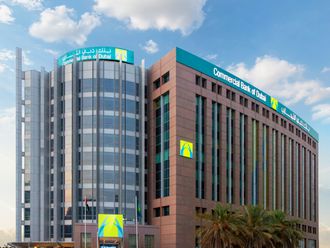Dubai: The medium-term economic outlook for Middle East countries remains clouded by geopolitical tensions while growth projections for the GCC region have been subject to a modest downward revision, according to the latest World Economic Outlook from the International Monetary Fund (IMF).
In the Middle East, North Africa, Afghanistan, and Pakistan (Menap) region, growth is projected to increase from 2.6 per cent in 2017 to 3.4 per cent in 2018 and 3.7 per cent in 2019. Growth is expected to stabilise thereafter at about 3.6 per cent through the medium term.
According to the IMF, the need for fiscal consolidation as a result of structurally lower oil revenues, security challenges and structural impediments is weighing on the medium-term prospects of many economies in the region.
In the GCC, the UAE’s economic growth has been revised downwards to 0.5 per cent in 2017, falling from a projected 1.3 per cent in October last year.
For 2018, growth has been projected at a more modest 2 per cent, lower that the 3.4 per cent forecast made last October. For 2019, the IMF sees a stronger rebound of 3 per cent.
In Saudi Arabia, growth is projected to resume this year, rising from a contraction of 0.7 per cent in 2017 to to 1.7 per cent.
Growth in 2019 is expected to rise slightly to 1.9 per cent as oil output increases.
“In line with the IMF, we see the higher oil price as positive for the outlook for the GCC economies. The rise in oil revenue should be supportive of government plans to raise spending and for confidence. Nevertheless, we still see an overall cautious approach and fiscal reforms will also dampen the pace of recovery in 2018,” said Monica Malik, chief economist at Abu Dhabi Commercial Bank (ADCB).
The latest IMF numbers show that Saudi Arabia and Kuwait had negative growth of minus 0.7 per cent and minus 2.5 per cent respectively, while Qatar experienced a 2 per cent real GDP growth.
Qatar’s economy is projected to grow at 2.6 per cent and 2.7 per cent in 2018 and 2019 respectively. Kuwait is projected to recover from a recession and report a positive growth of 1.3 per cent in 2017, followed by a 3.8 per cent growth in 2019.
Growth in Egypt is projected to rise to 5.2 per cent in 2018 and 5.5 per cent in 2019 (0.7 and 0.2 percentage points higher, respectively, than in the October World Economic Outlook report), reflecting stronger momentum in domestic demand and the effect of structural reforms.
Pakistan’s economy is expected to expand at a robust pace of 5.6 per cent this year, up from 5.3 per cent in 2017, before moderating to 4.7 per cent in 2019.
While the forecast for 2018 is unchanged relative to the October World Economic Outlook, for 2019, it has been revised down by 1.3 percentage points, partly reflecting an increase in macroeconomic vulnerabilities.










